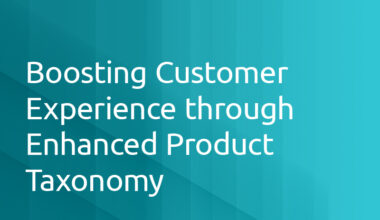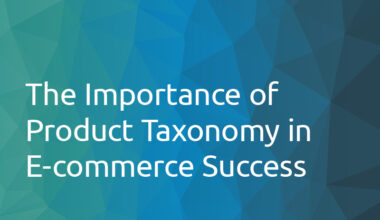Data classification acts as a critical linchpin in e-commerce, powering an array of functionalities, from advanced product search capabilities and personalized recommendations to inventory management and business analytics. By organizing data into meaningful categories, e-commerce businesses can unlock significant value, offering customers an optimized online shopping experience while driving operational efficiency.
Understanding Data Classification
At its core, data classification is a process of categorizing data into various types, classes, or categories, according to shared qualities or characteristics. For an e-commerce business, this could mean classifying products based on their type, brand, price range, or other features, or categorizing customers based on their demographics, purchase behavior, or preferences.
The Importance of Data Classification
1. Enhanced User Experience: Data classification allows for the easy discovery and comparison of products, enhancing the overall shopping experience for the customer.
2. Personalized Recommendations: With the help of data classification, businesses can provide personalized product recommendations, thereby increasing customer engagement and sales.
3. Improved SEO: Properly classified data can improve the SEO of the e-commerce site by making it easier for search engines to understand the website’s content and structure.
4. Efficient Business Operations: Data classification can streamline business operations, such as inventory management and order processing, by making it easier to track and analyze data.
Implementing Effective Data Classification
Set Clear Objectives: Begin by clearly defining what you aim to achieve with data classification. This could be improving search functionality, enabling personalized recommendations, or streamlining operations.
– Understand Your Data: Thoroughly analyze your data to understand its nature and structure. This will help you determine the most suitable classification scheme.
– Choose Appropriate Classification Methods: Depending on your objectives and data, you might choose a manual, automated, or hybrid classification approach. Machine Learning and AI can be particularly effective for large-scale, complex classification tasks.
– Maintain and Update Your Classification Scheme: Data classification isn’t a one-off task. Regularly review and update your classification scheme to ensure it remains relevant and effective as your business evolves.
Effective data classification can revolutionize the way e-commerce businesses operate, delivering a superior user experience while maximizing operational efficiency. By implementing thoughtful and dynamic data classification strategies, businesses can keep pace with the ever-changing e-commerce landscape and stay ahead in the competitive market.
Learn more about our product data classification services here.
 1.416.619.5349 Ext.325
1.416.619.5349 Ext.325 







